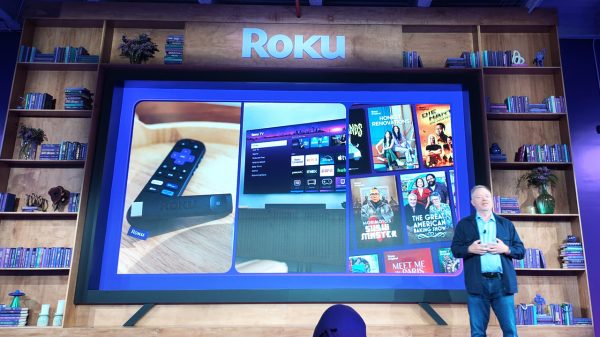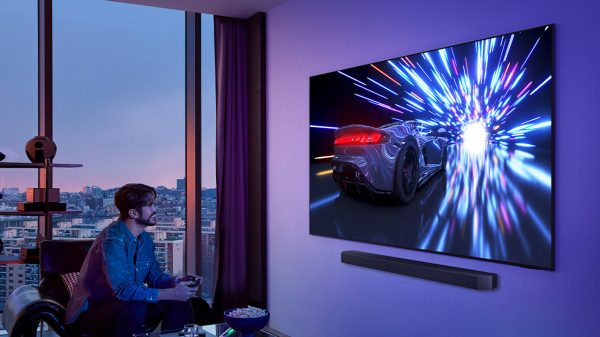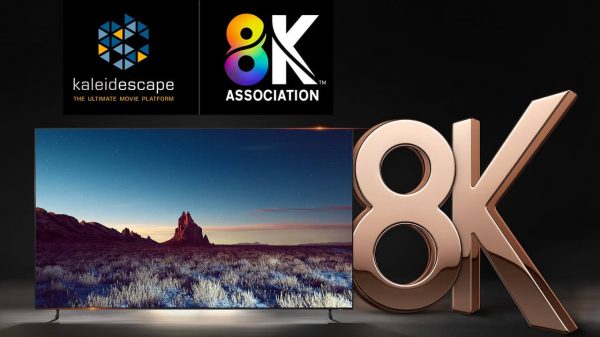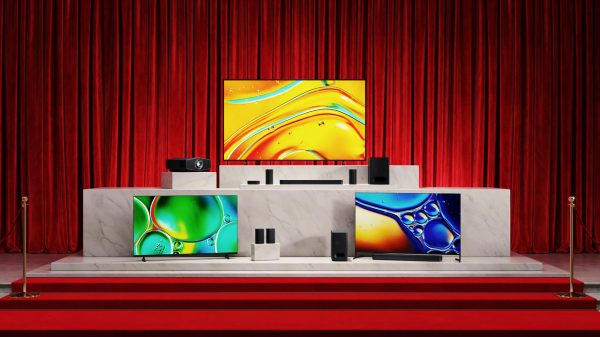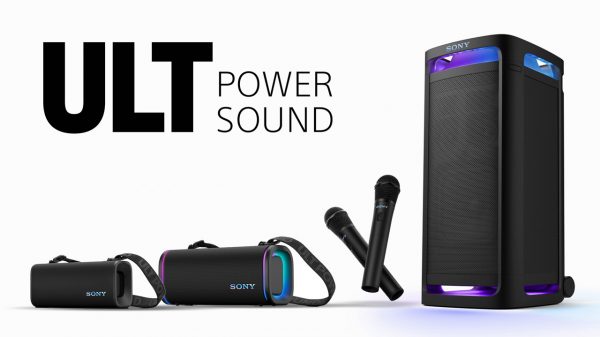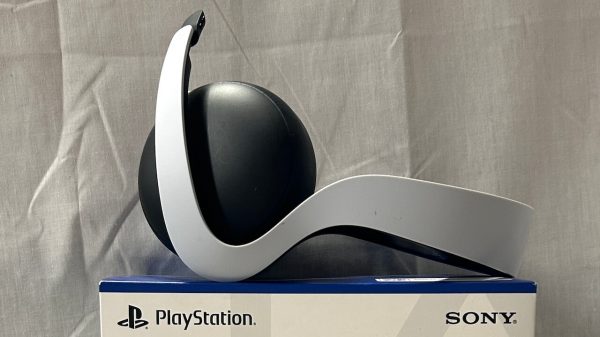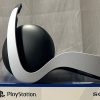After two grueling days of staring at test patterns, stills and video clips on eight of the top performing displays, the 2022 TV Shootout is behind us. And with it, two new “Kings of TV” have been crowned. As in previous years, we saw the best of the best from the top manufacturers compete head to head for the coveted awards. The event was hosted by independent A/V retailer Value Electronics and Consumer Electronics publication Dealerscope. You can see more details about the 2022 TV Shootout here.
It will probably come as no surprise to those who have attended or followed the TV Shootout in previous years that it was OLED on top in both categories:
- Best 4K TV: Sony 65-inch A95K QD OLED ($3,999 USD) won the 4K shootout.
- Best 8K TV: LG 88-inch Z2 Gallery Series OLED TV ($24,999 USD) won the 8K shootout.
OLED wasn’t the only technology on display this year, of course. Samsung contributed one QD OLED 4K TV, one MiniLED-lit 4K LCD TV and one MiniLED-lit 8K TV to the competition. Sony contributed a QD-OLED 4K TV, a 4K Mini LED-lit LCD TV and an 8K Mini-LED Lit LCD TV.
LG contributed one 4K OLED TV and another 8K OLED. In addition to the competitors, the show hosts also included Sony’s professional broadcast video monitor, the 32-inch BVMHX310 in the room as a reference. This $35,000 dual-cell LCD monitor is considered the reference standard for color accuracy and performance and is used by many of the content creation teams in Hollywood and beyond.
As with last year’s shootout, the organizers separated the sets into two distinct competitions: a 4K TV shootout and an 8K TV shootout. This was done in order to maintain a level playing field. The 4K Shootout was held on Saturday, July 30, 2022.

TVs Included in the 2022 4K Shootout:
- LG’s G2 65″ Gallery Series 4K OLED TV
- Samsung’s QN95B 65″ Quantum Dot 4K MiniLED/LCD TV
- Samsung’s S95B 65″ Quantum Dot 4K OLED TV
- Sony’s XR-A95K 65″ Master Series 4K QD OLED TV
- Sony’s XR-X95K 65″ MiniLED/LCD 4K TV w/Backlight Master Drive
Unlike in previous years, LG wasn’t the only company supplying OLED panels to the competition. Last year, the winner of the 4K shootout was also a Sony OLED TV, but the panel inside that TV was manufactured by LG Display. This year, Samsung has returned to the large panel OLED manufacturing game with a new type of OLED panel called “Quantum Dot Organic Light-Emitting Diode” (QD-OLED for short).
Both Samsung’s and Sony’s OLED entries this year were powered by Samsung QD-OLED panels. And these new QD-OLED panels are apparently quite good as the Sony and Samsung OLED sets took first and second places in the 4K competition. So what’s different with this new type of OLED? I’m glad you asked.
Emissive vs. Transmissive Displays
All OLED TVs differ from all LCD TVs in one fundamental way: OLED (Organic Light-Emitting Diode) TVs are emissive displays. This means each individual pixel in the panel emits light: it can be turned on or off, or set to varying degrees of brightness in between. LCD (Liquid Crystal Display) TVs are transmissive displays. LCD TVs create a picture using an LCD panel, which also has individual pixels. But these pixels on their own are too dim to create a visible image. A backlight source transmits light through the LCD panel in order to create a bright viewable picture.
When an OLED TV needs a pixel to be black, it turns it off. When an LCD TV needs a pixel to be black, it closes a shutter (or makes a filter element opaque), but a tiny bit of the light behind that shutter leaks through. So OLED TVs (like plasma TVs before them) create pure blacks and outstanding contrast. Because of the backlight leakage, LCD displays can’t usually create deep blacks as well as OLED.

All OLEDs are Not Created Equal
Not all OLED TVs are the same. LG’s OLED TVs use white OLED pixels which shine through a color filter to create red, green and blue sub-pixels. The new QD-OLEDs from Samsung used blue OLEDs combined with a Quantum Dot layer to create the individual red and green sub-pixels. Samsung claims that their QD-OLED TVs are capable of higher brightness (luminance), more accurate colors and better color saturation. And some of these claims seem to be borne out by the judges’ ratings.

In the bright room testing (SDR Day Mode), for “Peak Lumens” (highest perceived brightness) the two TVs using QD-OLED panels scored 9.6 (Sony) and 8.0 (Samsung) while the LG OLED scored a 7.3 in this category. The QD-OLED panels also scored higher for Color Saturation and High APL (Average Picture Level) in the HDR Reference Mode testing.
But then, the LG panel did score highest for “Peak Lumens” in the HDR Reference Mode tests, which suggests that it may perform better on UltraHD content with High Dynamic Range. The LG also got top scores for Motion Resolution and UHD Detail/Sharpness tests in HDR Reference Mode. So while the new type of OLED did outperform the traditional OLED in some areas, it didn’t exactly walk away with the competition.

The LCD sets put in a fairly strong showing in both the 4K and the 8K shootout. Color accuracy and saturation were better than what we’ve seen in previous years, though still no match for the OLEDs. Brightness/Luminance was also a strong point of the LCD TVs, but the gap between LCD and OLED TVs in peak brightness is clearly shrinking, particularly with QD-OLED. In other tests like picture uniformity or “Dirty Screen Effect” (DSE), off-axis viewing, detail and black level performance, the LCD TVs were clearly bested by the OLEDs, particularly when the room lights were dimmed.
LCD TVs do perform well in bright rooms (as you can see in the “SDR Day Mode” scores in the scorecards) so if you’re looking for a set that can still look good with the lights on, these LED/LCD sets are worth checking out.

The overall (unweighted) scores for the 4K Shootout averaged across all test categories were:
- Sony XR65A95K QD-OLED TV: 8.8
- Samsung QN65S95B QD-OLED TV: 8.4
- LG OLED65G2PUA OLED TV: 8.1
- Sony XR65X95K MiniLED-lit LCD TV: 7.4
- Samsung QN65QN95B MiniLED-lit LCD TV: 7.3

TVs in the 8K Shootout:
- LG’s Z2 88″ Signature Series 8K OLED TV
- Samsung’s QN900B 85″ Quantum Dot 8K LCD/MiniLED TV
- Sony’s XR-Z9K 85″ Master Series 8K MiniLED TV
The 8K TV Shootout was held on Day 2 of the event. In this competition, there was no QD-OLED in the running so LG’s OLED TV stood out as the clear winner. Sony’s XR85Z9K MiniLED-lit LCD TV did put up a strong showing in the daylight viewing category (SDR Day Mode) besting both of the competitors in peak brightness by a significant margin. This performance earned it the consolation prize of “Best Living Room TV” in the 8K TV competition. But it couldn’t match the LG OLED in the more critical dark room and HDR performance tests.


In the end, LG’s 88-inch Z2 Series OLED TV took the top score in 10 of the 14 test categories and won the event with an overall score of 8.3 out of 10 while the Sony LCD set scored 7.8 overall and the Samsung scored 7.6. If you consider that the Samsung in the competition sells for about $8,000 compared to $10,000 for the Sony and $25,000 for the LG, then the performance gap isn’t as large as one might expect.

As far as the event itself went, kudos must go out to hosts Value Electronics and Dealerscope as well as Emcee Extraordinaire, Caleb Dennison from Digital Trends. These folks kept the train moving, even through the occasional glitch or “animated discussion.” 8 hours is a long time to spend in a mostly darkened room with a bunch of sweaty dudes staring at screens. And yet not a single fight broke out.

Also, major props go to calibrators DeWayne Davis, Jason Dusta and John Reformato for squeezing every last ounce of performance out of these TVs. DeWayne and Jason were originally tapped as judges but they recused themselves from voting as they felt they were too close to the inner workings of the TVs to remain objective.

As for the judges, this year’s group included an impressive selection of professionals within the motion picture and entertainment industry as well as expert TV calibrators, engineers and imaging technicians.

Judges of the 2022 TV Shootout:
- David Mackenzie, Compressionist, Fidelity in Motion
- David Medina, Production Technical Operations, Warner Bros. Discovery
- Ed Johnson, Calibrator, video enthusiast, and Powerhouse Engineer
- Giles Sherwood, Director of Post Production, Criterion
- Ilya Akitoshi, Colorist and Digital Imaging Technician
- Jeff Hagerman, Digital Imaging Technician
- John Reformato, Engineer and ISF III Calibrator
- Kenneth Almestica, Senior Technical Director, Viacom
The event’s creator, Robert Zohn, president of Value Electronics, had this to say about the event: “Thank you to everyone who has helped to make this a successful event. Congratulations to all of the manufacturers of the great TVs competing in this year’s event from LG, Sony, and Samsung.”

Robert tells us he and Dealerscope are planning to hold a projector shootout this fall. There will be separate competitions for standard long throw projectors and for ultra short throw (UST) projectors. The projector market has been heating up lately with more native 4K options than ever. So this should be an interesting event. Stay tuned for more information on that.




















